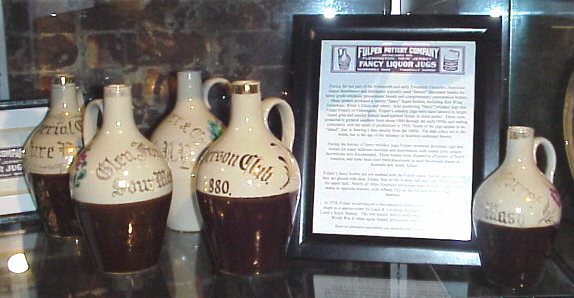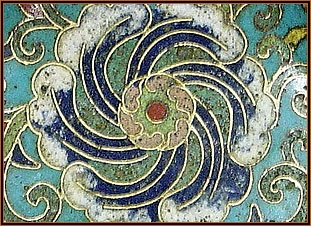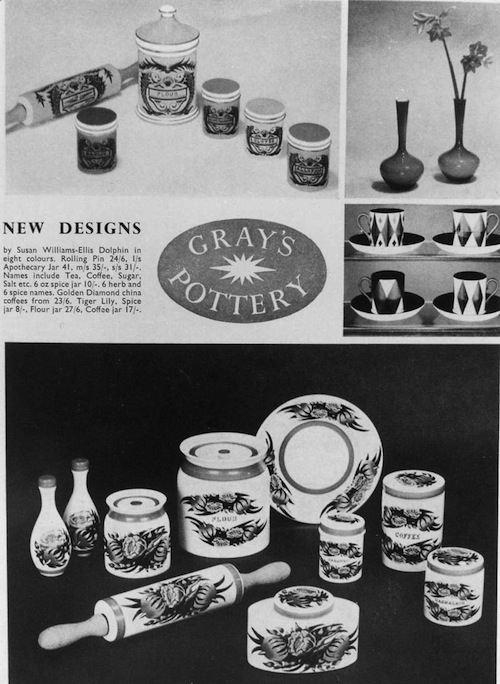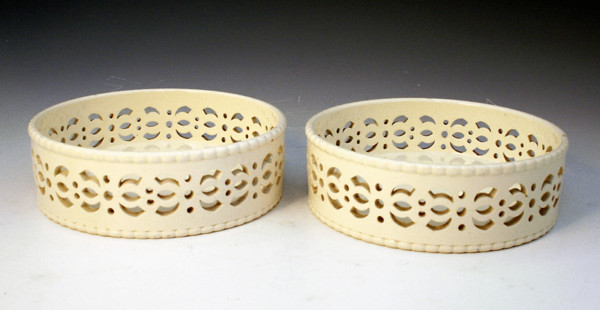A Meakin (Ltd) and Alfred Meakin (Tunstall) Ltd
Alfred Meakin Ltd was set up in 1875 and operated from the Royal Albert, Victoria and Highgate Potteries in Tunstall. Alfred Meakin was the brother of James and George Meakin who ran a large pottery company in Hanley, Stoke-on-Trent.
FACTORIES:
1875 – Royal Albert Pottery; Victoria Pottery (built 1858); Highgate Potteries, Parsonage Street, Tunstall (known collectively as Royal Albert, Victoria & Highgate Potteries)
1930 – Newfield Pottery (in addition to above); (by 1928, known collectively as Royal Albert, Victoria and Newfield Potteries).
1957 – c.1980 Victoria and Highgate Works (new)
c.1980- Alexander Works , Cobridge (built by Myott in 1902)
also (1949) owned the Furlong Mill as a subsidiary company preparing materials.
Alfred Meakin died in 1904 and was succeeded by his son Alfred James who died only four years later. Alfred John’s uncle Robert Johnson bought the company for his son Stuart Johnson and it stayed in the Johnson family’s hands until 1976 when it became Myott-Meakin before becoming part of the Churchill Group.
1875 – 1897 Alfred Meakin
1897 – 1913 Alfred Meakin Ltd. (in 1908 bought by members of the Johnson family)
1913 – 1976 Alfred Meakin (Tunstall) Ltd
1976 acquired by Myott, Son & Co. Ltd (Hampson refers to Interpace Corporation of Parsippany, New Jersey, owning both Myott (since 1969) and Alfred Meakin. Interpace were, at the time, the largest tableware manufacturer in the USA)
1976 -1991 Myott-Meakin
1989 acquired by Melton Modes (Nottingham) to become Myott-Meakin (Staffordshire) Ltd.
1991 management bought out Melton Modes
June 1991 acquired by Churchill Group
In 1845 a James Meakin manufactured at Newtown Works, Uttoxeter Road, Longton. Of his sons, James and George founded J & G Meakin (Hanley), while in 1874 another son, Alfred, founded Alfred Meakin at Tunstall. The company appears to have been the amalgamation of three separate factories (Royal, Victoria and Highgate Potteries).
The families of Meakin, Johnson, Ridgway and Pearson were all related and their activities intertwined.
According to an 1881 advertisement, Alfred Meakin manufactured ironstone china and white granite ware, suitable for export. Examples of their ironstone export wares are illustrated in the Wetherbee and Heaivilin collectors’ guides. The company are reported to have set up their own methods of distribution in the USA and used the mail order catalogues of large US companies. Shapes such as Bamboo (1870’s-80’s), Fishhook (1880’s) and Chelsea were the most common. Alfred Meakin was one of the most prolific manufacturers of the Tea Leaf design, exported by many other Staffordshire companies following its introduction as a motif in the mid-1850s. Together with other simple designs it supplemented the plain white ironstone which was in common use in America. The motif was normally produced in copper lustre although examples of gold lustre have been found – the design was consequently also known as Lustre Spray. Production of the tea leaf design stopped in 1910.
In addition to wares for export, ordinary domestic and traditional tablewares were made, such as the Bleu de Roi dinner ware, presented to King George V and Queen Mary on their 1913 Royal Visit to the pottery. (See below)
Around the turn of the century the company manufactured ‘The World’s Largest Teapot’ weighing 250 pounds, holding 20 gallons – enough for 480 people. This pot was reputedly made by a Robert Williams and was owned by a George Pritchard of Rome, New York. The fate of this teapot is not known but a larger one was later made by Gibsons. They may have been part of friendly inter-company competition.
Tiles were also manufactured by Alfred Meakin from the 1890s featuring art nouveau floral designs and the company were still reported as being involved in tile making in 1922.
In 1932 children’s ware, such as Peter Pan and decorated wares, such as this hand-painted plate (See below) were being made. Art Deco designs were manufactured. A company promotional leaflet of 1949 states that they were famous for coloured banding. Their products were used on public transport such as the Flying Scotsman. At this time, there were over 1,200 employees and both bottle and tunnel ovens were in use.
After moving to a new factory in 1957, many new tableware shapes and patterns were introduced. Some designs from the 1950s and 1960s are similar to better known designs, such as Midwinter’s Riviera or Cannes or Ridgway Potteries Homemaker and are typical examples of what many firms of the period were producing. The teapot, plate and vegetable dish shown below are examples from the collection in the Potteries Museum.
The company employed 1,000 in 1973, and 2,000 in 1977.
Myott-Meakin revived the use of the Alfred Meakin backstamp for bone china in 1985 but this range (some of which was manufactured in China) was discontinued late 1989/early 1990 to concentrate on earthenware production. The majority of Myott-Meakin production was exported.
Pattern information
Some additional information about patterns can be found at our Alfred Meakin pattern information sheet.
Collection details
1930s: Hand Painted Plate;
1950s: Dinner Plate;
1950s: Covered Vegetable Dish;
1913: Dinner Service for Royal Visit;
1950s: One person teapot.
Further reading
R. Hampson, Churchill China : Great British potters since 1795, University of Keele, 1994
A.D. Heaivilin, Grandma’s Tea Leaf Ironstone, Wallace Homestead, 1981
J. A Wetherbee, Second Look at White Ironstone, Wallace Homestead, 1981
J. Wetherbee, White Ironstone : a Collector’s Guide, Antique Trader Books, 1996
|
This information has been collated from articles and advertisements in the trade press and published sources. It should not be regarded as complete. Additional information will be added as, and when, it becomes available. Descriptions are those of the authors cited. TABLE 1 : 19th and early 20th century printed patterns
Sources for Table 1 1. WILLIAMS, Petra Flow blue china : an aid to identification. Rev ed. Fountain House East, 1981 2. GASTON, Mary Frank Collectors’ encyclopaedia of flow blue china. Collector Books, 1983 3. WILLIAMS, Petra Flow blue china II. Rev ed. Fountain House East, 1981 4. WILLIAMS, Petra Flow blue china and mulberry ware : similarity and value guide. Rev. ed. 5. SNYDER, Jeffrey B. Flow blue : a closer look. Schiffer, 2000 6. VAN BUSKIRK, William Late Victorian flow blue and other ceramic wares. Schiffer, 2002
Bamboo c.1896 TABLE 3 : Post-war patterns PATTERN NAME SHAPE DATE |











